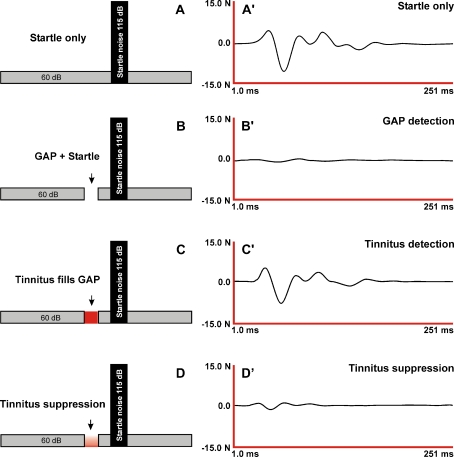FIG. 1.
Diagrams (left column) and screen shots from experiments (right column) showing: Startle stimulus alone (A) yielded robust startle-only responses (A′); startle stimulus preceded by a 40-ms silent gap (B) suppressed startle responses, indicating detection of gap (B′); startle stimulus preceded by a gap that is filled with tinnitus signals (C) yielded increased startle response, indicating gap detection was compromised (C′); decreased/suppressed tinnitus signals by ACES (D) diminished startle responses, suggesting restoration of compromised gap detection (D′). Background noise was narrow band noise at 60 dB SPL and startle stimulus was broadband noise at 115 dB SPL. Startle responses were reflected in Newtons.

